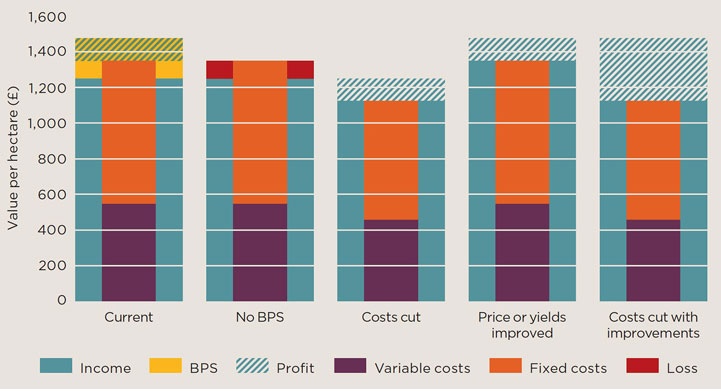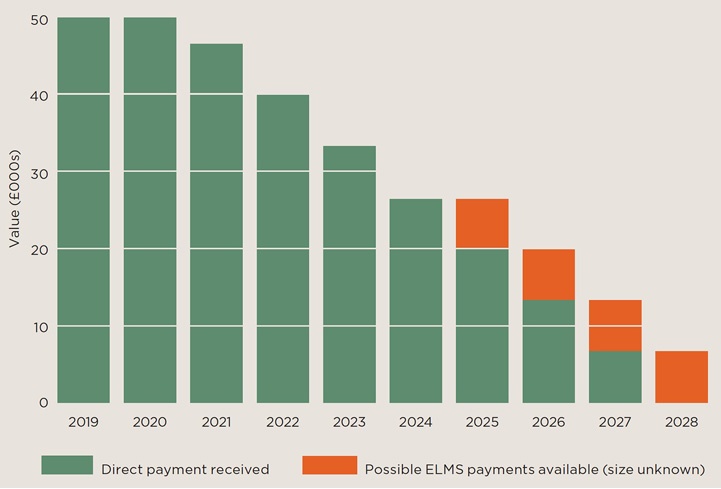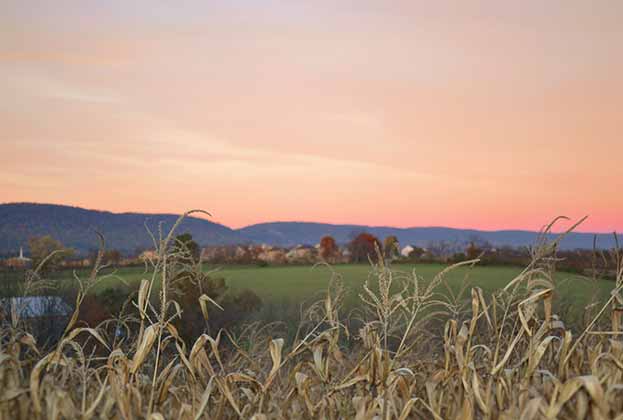Businesses need to ensure they remain financially secure as support is withdrawn
Based on Defra’s analysis of farm accounts between 2014/15 and 2016/17, removing direct payments would result in 40% of farms making a loss. To reach breakeven, the 10% of farms making the biggest losses would need to reduce their costs by an average of 31%. Half of cereal farms would need to cut their costs by 10% or more.
At present, average wheat and oilseed rape crops generate approximately £1,500 per hectare of income, which includes £225 of BPS support (see below). When BPS is withdrawn, with all else being equal, the crop would lose £105 per hectare. How can a business respond to this and compensate for the lost income?

Adapting to subsidy withdrawal
Source: Savills Research
Increasing yields is only part of the solution. The five year average wheat yield is 8.2 tonnes per hectare, which at summer 2018 prices (£162 per tonne) means that an 18% increase in yield would, in theory, replace the lost BPS income. The UK wheat yield record is 101% higher than the average at 16.52 tonnes per hectare, which illustrates the crop’s potential under the right management and cropping conditions. However, this does not account for the additional input costs to achieve this: the profit margin is more important than the yield.
On the same average wheat crop, reducing costs by 17% would restore profitability to current levels. While it is possible that input costs, including agro-chemicals and machinery, could soften due to the more constrained purchasing power of farmers, this cannot be quantified and built into business plans.
To ensure the continued viability of their businesses, farmers should explore other opportunities to reduce costs
Savills Research
To ensure the continued viability of their businesses, farmers should explore other opportunities to reduce costs such as collaboration, reduced cultivations, basic fuel and engine efficiency, or precision farming technology and techniques to improve input use efficiency. Ultimately, the successful strategy will be to both cut costs and increase income, which in both these scenarios would deliver a profit of £385 per hectare, 188% higher than the current profitability, and more than compensating for the loss in BPS support. The challenge is, of course, to achieve these levels of profit whether or not BPS is received.
Unsupported agriculture
Between 2014 and 2017, an average of 79% of profit on cereal farms was derived from direct payments. If the agricultural transition period goes ahead as planned, it will be essential that businesses are proactive in taking action to make sure they remain financially secure and can maintain their margin as support is withdrawn. Unprofitable businesses will need to develop a turnaround plan, otherwise trading losses will erode their capital. Savills has developed a subsidy reduction calculator that illustrates how payments could fall (see below).

Projected direct payment received England
Source: Savills Research
The model is this for a farm currently receiving £50,000 from the Basic Payment Scheme (BPS). There will be a clear gap between payments starting to reduce in 2021 and the new Environmental Land Management scheme (ELMS) opening in 2025. ELMS should not be viewed as a replacement for BPS. Not only is ELMS targeted at different policy outcomes to the BPS, its budget and how it will be targeted are also unknown.
Read the articles within Delivering Future Arable Performance below.
.jpg)
.jpg)
.jpg)

.jpg)
.jpg)